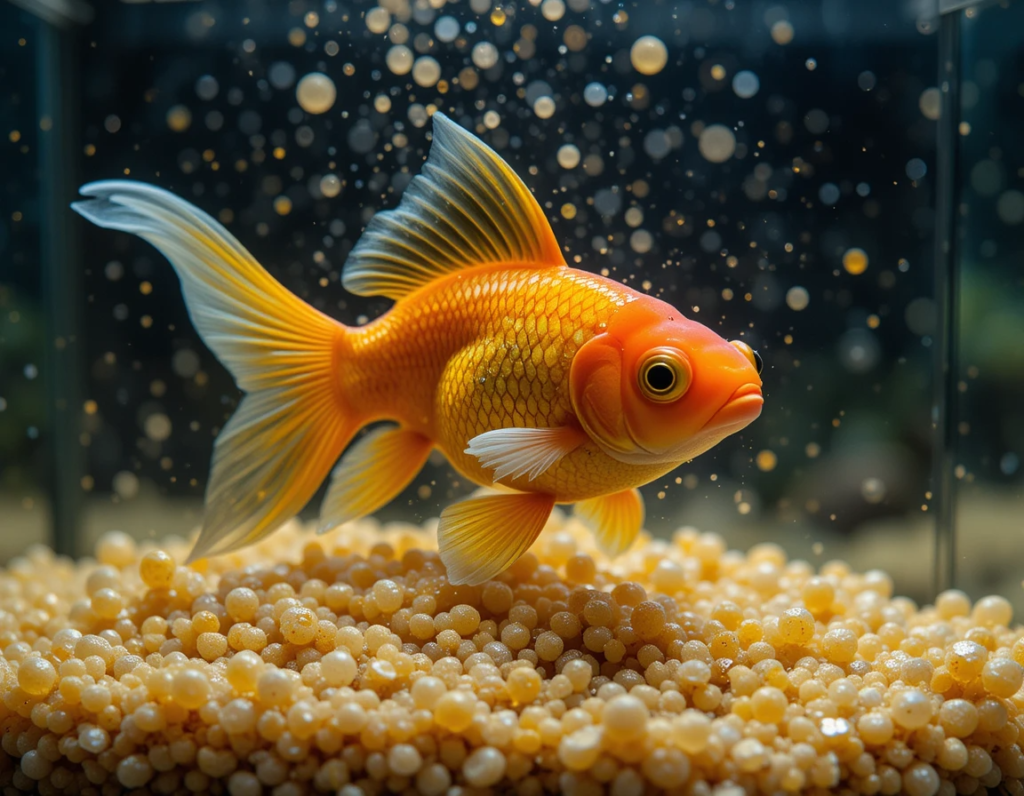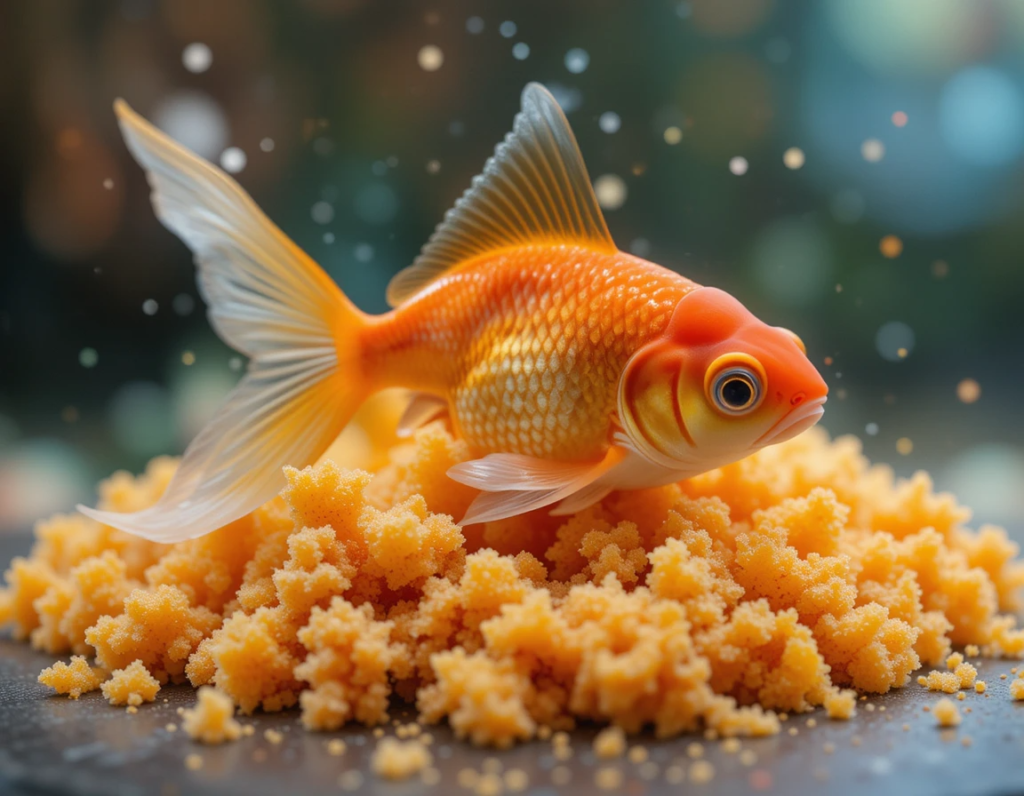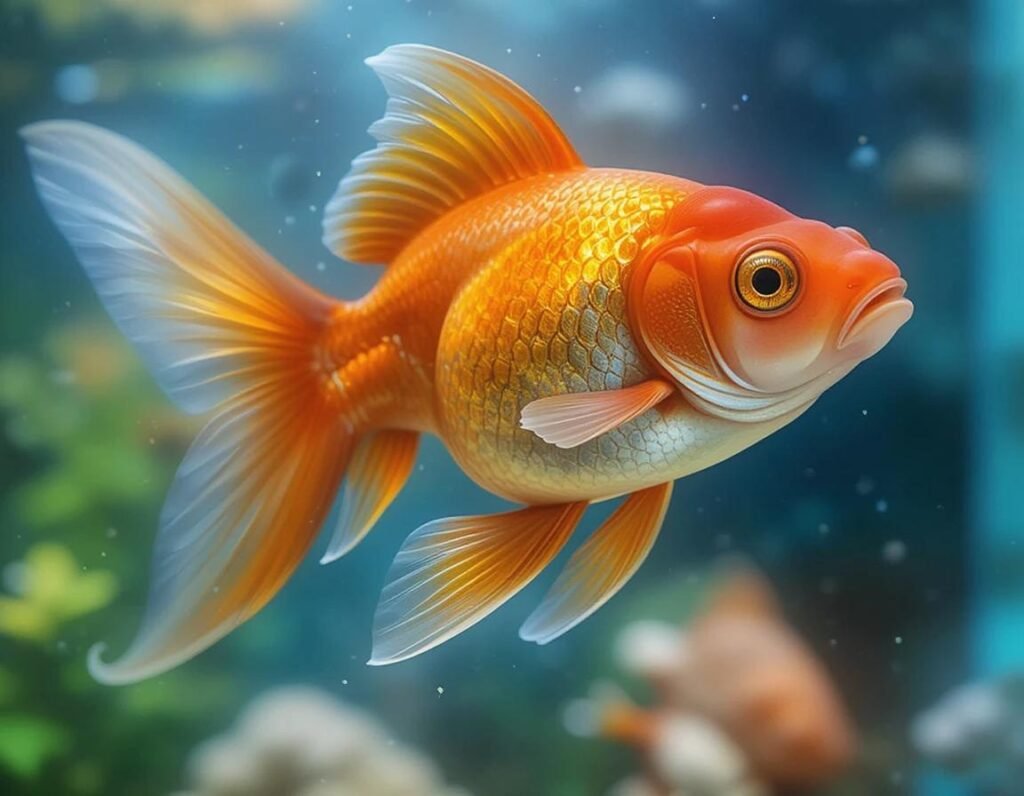
Goldfish Poop Color Meanings: What Your Fish’s "Business" Tells You
Goldfish—those cute little aquatic buddies that float around, do backflips, and generally make life a little brighter. But when you start paying close attention to their behavior and tank environment, there’s one thing you can’t ignore: their poop. Yes, it’s not the most glamorous topic, but if you’re a responsible fish owner (and let’s face it, you are), understanding your goldfish’s poop is just part of the package deal.
So, what does the color of your goldfish’s poop actually mean? Don’t worry, we’ve got the scoop on this very fishy business.
What Goldfish Poop Should Look Like
First things first—healthy goldfish poop is usually brown or darkish in color. If everything is working well in the digestive department, you’ll see a small, soft, and stringy piece of waste. It’s kind of like your fish’s way of telling you, “Hey, everything’s working fine down here!” The poop might look a little different depending on their diet, but it should not be alarming.
But, as with all things related to your fish, there are some exceptions that may require you to take notice. Poop color can actually tell you a lot about your goldfish’s health, and that’s why we’re diving deep into this topic. Let’s decode the meaning of goldfish poop color!
1. Brown or Dark Brown Poop – The Healthy Option
This is the gold standard. Healthy goldfish poop will typically be brown or dark brown. If you spot this, give yourself a pat on the back—your fish is living their best life, eating well, and digesting everything properly. So, in fish terms, everything’s A-OK. This is what you want to see on a regular basis.
What to Look For:
- Small, soft, and stringy pieces of poop
- Brown or dark brown color
- Regular and consistent excretion
Fun Fact: Just like us humans, goldfish have regular bowel movements! The healthier the diet, the more regular the poop!
2. White Poop – Uh-Oh, Something's Fishy
If you see white poop, don’t panic, but definitely pay attention. White poop is often a sign that something isn’t quite right with your goldfish’s digestion. It can mean a couple of things:
- Overfeeding: Sometimes, when you feed your goldfish too much, their digestive system gets overwhelmed, and they might pass out unprocessed food. This can result in white or clear poop.
- Parasites or Infections: White poop can also be a sign of an internal parasite or some kind of intestinal infection. If the poop is stringy and consistently white, it’s time to check your fish for other signs of illness (such as lethargy or loss of appetite).
What to Do:
- Reduce feeding and ensure a balanced diet
- Check for signs of illness or infection
- If it persists for a few days, consider consulting a vet or a fish expert
Pro Tip: Goldfish can’t resist the temptation to eat, and they’ll take whatever you offer them, even if it’s more than they need. So, moderation is key!
3. Green Poop – A Feast for the Eyes, But Is It Healthy?
Have you ever seen green poop floating around your tank? If your goldfish has been munching on some green leafy veggies, this is probably the culprit. Spinach, lettuce, and other leafy greens can sometimes cause a burst of green in the waste department.
However, if your fish is only eating pellets or flakes, and you still see green poop, it could point to a digestive issue or even an overgrowth of algae in the tank. That’s why regular water changes and good filtration are key to keeping things balanced.
What to Look For:
- Green poop after feeding veggies? Totally normal.
- Green poop without a change in diet? Could indicate an imbalance.
Note: If your goldfish’s poop is constantly green and they seem sluggish, it could be a sign of a tank issue—check your water quality!
4. Clear or Transparent Poop: The Mystery Waste
Goldfish can sometimes pass clear or transparent poop. If this happens every once in a while, it might not be a big deal. It could simply be a result of eating foods like gel-based fish food or something that’s mostly water. However, consistent clear poop could indicate a lack of fiber in their diet or constipation. They might also be experiencing some sort of digestive upset.
What to Do:
- Feed your goldfish more fiber-rich foods like peas or blanched spinach to keep things moving.
- Ensure a balanced diet that includes both proteins and fiber.
Fun Fact: Goldfish can get constipated! Imagine that—a fish in need of some “regularity” advice.
5. Red Poop – Alert! Something’s Off
Red poop can be a sign of a serious problem. This could indicate internal bleeding or an infection. Red stool can also result from a parasite or bacterial infection, so it’s definitely a cause for concern.
What to Do:
- Act fast: Check for other signs of illness, like a loss of appetite or abnormal swimming.
- If the red poop persists, it’s time to get professional help, so don’t hesitate to consult a vet specializing in fish health.
Pro Tip: Red poop could be a sign that your goldfish has a bloody situation on its hands (figuratively, of course), so don’t ignore it.
6. Stringy Poop – The Slime Factor
Goldfish may occasionally pass stringy poop, and while it might seem strange, it’s often not a major concern. If your goldfish has had a particularly high-protein diet, their poop might appear long, stringy, and slimy. However, if the stringiness continues for more than a couple of days, it could indicate intestinal parasites or bacterial infections.
What to Look For:
- Stringy poop can be normal after eating certain foods (like live food or high-protein options).
- Prolonged stringy poop may point to a digestive or health issue.
Pro Tip: Stringy poop isn’t always a reason to hit the panic button, but if it’s paired with behavioral changes, then you may need to take action.

Final Thoughts: Understanding Goldfish Poop Is Key to a Healthy Tank
While goldfish poop might not be a topic you bring up at dinner parties, it’s important to keep an eye on it. The color, texture, and consistency of your goldfish’s waste can tell you a lot about their health and tank environment. If you notice any unusual changes in their poop, take action right away to prevent further problems.
And don’t worry—while it might not be glamorous, your goldfish will appreciate your keen eye for detail. So, next time you spot a little goldfish “business” in the tank, you’ll know exactly what it means!
Additional Tips for Maintaining a Healthy Goldfish Tank
Now that you’re a goldfish poop color expert, let’s cover some more tips to help keep your fish’s tank and overall health in check:
1. Monitor Water Quality
Just like food influences your goldfish’s poop, water quality is essential for their health. Poor water conditions can lead to stress, digestive issues, and even affect the color and consistency of their poop. Be sure to test your water for ammonia, nitrate, and nitrite levels regularly. A good filtration system and frequent water changes are key to maintaining a healthy environment for your goldfish—and for keeping their poop healthy too.
2. Regular Feeding Habits
Goldfish are bottomless pits when it comes to food, but overfeeding can lead to digestive issues. Stick to feeding them small portions a couple of times a day, and avoid overloading them with treats. If you notice food that hasn’t been eaten in a few minutes, remove it to prevent tank pollution and digestive problems. Quality over quantity is the way to go for your goldfish’s diet—and their poop will thank you.
3. Variety in Diet
Give your goldfish a balanced, varied diet that includes both pellets and vegetables. Healthy treats like blanched peas, spinach, and lettuce help with digestion and can keep their bowel movements in tip-top shape. And if you want to treat them to something special, try feeding them some live foods, like bloodworms or daphnia (just remember to be careful with portion sizes).
4. Watch for Behavior Changes
Goldfish behavior can also signal health issues. If you notice your goldfish is suddenly lethargic, swimming erratically, or has a loss of appetite, don’t wait for more symptoms to show up. These behavioral changes could indicate an underlying issue that will eventually show up in their poop too. Stay proactive—your goldfish will thank you!
5. Check for Tankmates’ Impact
If you have other fish in the tank, make sure they’re not disrupting the water balance or introducing diseases. Tankmates like snails and shrimp are usually fine, but some fish can be aggressive and introduce stress to your goldfish, which might affect their health and digestion. Keep an eye on the social dynamics of your tank to ensure all your fish are getting along.
Conclusion: Goldfish Poop, the Unsung Hero of Fish Care
Goldfish poop may not win any awards for being glamorous, but it’s undoubtedly an important indicator of your fish’s health. By keeping an eye on the color, texture, and consistency of your goldfish’s waste, you’ll be able to catch potential health issues early and keep your fish happy and healthy for years to come.
And remember, healthy goldfish poop is the best sign of a happy goldfish! So, embrace your role as the tank’s poop inspector and ensure your goldfish stay in tip-top shape. Who knew that something so small could tell you so much?
Now go ahead and check your tank—hopefully, it’s just some nice, dark brown waste telling you everything’s peachy in your fish world!
FAQs About Goldfish Poop Color Meanings
1. What does brown poop mean for my goldfish?
Answer: Brown or dark brown poop is typically a sign of healthy digestion in goldfish. It’s normal and indicates that your fish is eating well and their digestive system is functioning properly. If you see this, you can feel confident that your goldfish is in good shape!
2. Why is my goldfish's poop white?
Answer: White poop can indicate a few things, such as overfeeding, where the food isn’t fully digested, or it could be a sign of an internal parasite or infection. If the white poop persists, it’s a good idea to check your fish for other symptoms like lethargy or loss of appetite, and consult an expert if needed.
3. What does green poop in goldfish mean?
Answer: Green poop is usually a result of eating leafy greens like spinach or lettuce. If your goldfish has been fed veggies, this is perfectly normal. However, if there’s no change in diet and the green poop continues, it might indicate a water issue or an overgrowth of algae in the tank. Be sure to check your tank’s water quality.
4. Is it normal for goldfish to have clear or transparent poop?
Answer: Occasional clear or transparent poop can be normal, especially if your goldfish has eaten gel-based or high-water-content food. However, if it happens regularly, it could be a sign of constipation or a lack of fiber in their diet. Consider adding more fiber-rich vegetables like peas to their meals.
5. Why is my goldfish’s poop red?
Answer: Red poop is not something to ignore. It could indicate internal bleeding or an infection in your goldfish’s digestive system. If you notice red poop, immediately check for other symptoms, such as lethargy, loss of appetite, or abnormal swimming. In this case, it’s best to seek help from a vet or a fish health expert.
6. What should I do if my goldfish has stringy poop?
Answer: Stringy poop can occur after feeding high-protein foods, but if it becomes a frequent issue, it could be a sign of intestinal parasites or other digestive problems. Consider changing their diet to include more balanced foods and fiber, and consult a fish specialist if the stringy poop continues for more than a couple of days.
7. Can goldfish get constipated?
Answer: Yes, just like humans, goldfish can suffer from constipation. If your goldfish hasn’t pooped in a while, or their poop is difficult to pass, try feeding them blanched peas or other fiber-rich foods. If constipation continues, it may be worth looking into water temperature, overfeeding, or potential health issues.
8. How can I improve my goldfish’s digestive health?
Answer: To keep your goldfish’s digestive system healthy, provide a balanced diet of high-quality pellets, veggies, and occasional live foods. Make sure you’re not overfeeding and that you’re doing regular water changes to maintain a clean environment. A healthy digestive system usually results in healthy poop!
9. Does goldfish poop color change with age?
Answer: Goldfish poop color may change slightly as they get older, especially if their diet or tank conditions change. However, any sudden or drastic change in poop color should be monitored. If you see unusual colors like white, red, or stringy poop, it’s time to investigate further.
10. What are the most common signs of digestive issues in goldfish?
Answer: Common signs of digestive issues include changes in poop color or consistency, such as white, red, or stringy poop, a lack of appetite, or abnormal swimming behavior. If you notice these symptoms, it’s important to take action and either adjust their diet or consult a professional to ensure your goldfish’s health.
Understanding goldfish poop may not be the most glamorous aspect of fish care, but it’s definitely one of the most informative! Keeping an eye on these tiny details can help you catch any potential health issues early and ensure your goldfish stays happy and healthy.


